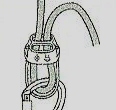If you happen to be among the group of Property Adjusters who believe that Ladder Assist industry is not gaining a foothold and gobbling up roof inspection claims assignments in this country then it is time to take a closer look.
Ten years ago we had one Ladder Assist company and that was run by Pilot for Allstate Ins but today we have:
Assist All, Austin SW Ladder Assist, Camco, Certified Ladder Assist, Cornerstone, Delta Claims Svs, First Choice Ladder Assist, GRIP, Hancock Claims Consultants, KMK, Ladder Assist Pro, Ladder Assist Team, Ladder Now, Manta, Maxus, Miller Enterprises, MT Ladder Assist, Property Medic, Southern Roof Tops, Superior Ladder Assist, TruLine Roof Consultants…
…and more throwing their hat into the ring every day.
Facts are that the climate for the growth of these service organizations could not be more perfect:
Fact # 1 – The days of the 4/12 Ranch style houses are dead and no longer a part of the modern housing construction industry.
Like it or not, the simple but simple 4/12 pitched Ranch style home roofing system has now been surpassed by mega pitched architectural masterpieces that now dominate the modern housing construction industry. Shame on you (and me) for the foolish assumption that shedding water would always be priority #1 with respect to roof system design because today’s priority is all about catering to the uneducated masses who want the curb appeal that these cut-up leak monuments provide.
Fact # 2 – Fear is a crippling condition which can impair judgment that facilitates mistakes that can initiate a fall. Acrophobia (the fear of heights) is the most common form of irrational fear found amongst humans. Many might argue the fact that the act of falling is not irrational at all to which I would agree hower, fear for the sake of being at height alone while in control defaults to the category of a legitimate phobia.
It is important to note that all people are NOT created equal with respect to both their comfort level and inherent god given abilities for working at height. Comprehensive Fall Protection Program strategy indicates that careful selection of your workforce is a critical requirement for limiting falls, something the Ladder Assist industry appears to do very well. Property Adjusters are scrutinized on many different levels to determine the depth of their claims handling skills however, not for their inherent abilities to work at height.
Fact # 3 Liability for personal injury, inaccurate work product and the damage that can be caused from steep roof inspection process itself is costly and requires more than a ready, fire, aim management strategy.
Ladder Assist organizations manage their liability in several different ways:
For liability resulting from federal and state OSHA laws they use an independently contracted work force that is required to provide their own individual LLC. This is required for the simple reason that if you own your own company, you are your own employee and therefore exempt from OSHA 1926.5 regulation for providing fall protection. Furthermore, many LA organizations also require their workers to provide their own workman’s comp insurance.
For liability resulting from damage to property, LA organizations require each independently contracted worker provide their own two million dollar liability policy that specifically names and protects LA organization in the event of an incident.
For liability resulting from work product the LA companies guarantee that all information on the roofing system will be gathered from the roofing system then reviewed for compliance prior to being handed over to insurance adjuster…
My ultimate goal here is to stress the point that if the IA industry as a whole does not develop and implement a comprehensive managed fall protection program that:
- Recognizes real Rope Access training is very different than “Sport Climbing” based training. An important detail when you consider the fact that most IAs are employees and "Sport Climbing" gear and technique is not OSHA compliant at the local level in a growing number of states across the country.
- Identifies those select workers within their ranks who have the appropriate physical and psychological attributes to successfully limit company liability and the liability of the Carriers they serve.
- Appropriately solicits, hires and cultivates a high angle service component that recognizes and rewards those capable workers who are willing to accept the risks of high angle roof inspection. Rewarding appropriately trained and capable workforce by saddling them with more responsibilities at the same or lower pay rate as other Property Adjusters WILL NEVER appropriately incentivize an effective program and allow it to take hold.












